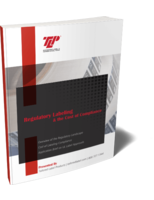ASTM Develops clothing temperature rating standard.
Press Release Summary:
ASTM International's F2732 standard, Practice for Determining the Temperature Ratings for Cold Weather Protective Clothing, explains all variables that affect a person's thermal comfort. It also describes a procedure for measuring the insulation value of jackets, jacket/pants set, or coveralls over a standard lightweight base ensemble. Manufacturers of cold weather clothing for consumers and insulated apparel for the workplace will be the primary users of this standard.
Original Press Release:
New Temperature Rating Standard Is Developed by ASTM Personal Protective Clothing Committee
W. CONSHOHOCKEN, Pa., July 30, 2009-In the field of personal protective clothing, a temperature rating indicates the lowest acceptable air temperature at which an average person would be comfortable when wearing a certain set of clothing. While manufacturers believe that providing temperature ratings is helpful to consumers when they are comparing garments, there have been different methods of testing for a temperature rating. The need to find common ground in this area has led to a new ASTM International standard, F2732, Practice for Determining the Temperature Ratings for Cold Weather Protective Clothing.
The new standard is under the jurisdiction of Subcommittee F23.60 on Human Factors, part of ASTM International Committee F23 on Personal Protective Clothing and Equipment.
According to Elizabeth McCullough, co-director, Institute for Environmental Research, Kansas State University, and a past chair of Subcommittee F23.60, F2732 provides an explanation of all the variables that affect a person's thermal comfort and describes a procedure for measuring the insulation value of a jacket, jacket/pants set or coverall over a standard lightweight base ensemble.
McCullough notes that the new standard makes the temperature rating prediction at a low activity level for safety reasons. "If people are active and producing a lot of body heat, they can simply adjust their cold weather garments to provide cooling," she says.
Manufacturers of cold weather clothing for consumers and insulated apparel for the workplace will be the primary users of the new standard. "If most manufacturers follow F2732, consumers will be better able to compare the temperature ratings of cold weather garments described in catalogs and on Web sites, and make informed purchases," says McCullough.
ASTM International standards can be purchased from Customer Service (phone: 610-832-9585; service@astm.org) or at www.astm.org. For technical information, contact: Elizabeth McCullough, Institute for Environmental Research, Kansas State University, Manhattan, Kan. (phone: 785-532-2284; lizm@ksu.edu). ASTM Committee F23 meets Jan. 26-28, 2010, during January committee week in San Antonio, Texas.
ASTM International welcomes and encourages participation in the development of its standards. ASTM's open consensus process, using advanced Internet-based standards development tools, ensures worldwide access for all interested individuals. For more information on becoming an ASTM member, please contact Stephen Mawn, ASTM International (phone: 610-832-9726; smawn@astm.org).
Established in 1898, ASTM International is one of the largest international standards development and delivery systems in the world. ASTM International meets the World Trade Organization (WTO) principles for the development of international standards: coherence, consensus, development dimension, effectiveness, impartiality, openness, relevance and transparency. ASTM standards are accepted and used in research and development, product testing, quality systems and commercial transactions around the globe.
Contact:
Barbara Schindler, ASTM International
00 Barr Harbor Drive, W. Conshohocken, PA 19428
610-832-9603; bschindl@astm.org
www.astm.org




